Supports for Classroom Activities
Once the classroom work and fun begins, you might need some assistance in making your CEPNET sessions come alive. Across our schools, we worked to develop a suite of tools, supports, ideas, activities, artefacts, as well as collecting testimonials and feedback. These resources are presented here.
Phase 1 Supports
Once you get going with your Phase 1 work in the classroom, there are a range of useful documents and practical guides that will assist you in promoting engaging dialogues and discussions. Our teachers assisted in producing and testing the following materials.
These include icebreakers and energisers that can help get the class motivated and ready for discussion. These games also assist in making a clean break between the more usual classroom learning activities such as mathematics or science and then moving away from these and into something different.
CEPNET-Icebreakers-and-Energisers
One of our teachers give some ideas here:
Teachers also suggested some facilitation strategies and methods that can also help in distinguishing that the class is now moving to the “different” CEPNET approach.
CEPNET-Facilitation-Strategies
As well as these empowering facilitation tools, teachers made use of other appropriate methods, such as the following open-ended questions.
CEPNET-List-of-Open-Questions-to-facilitate-the-dialogues
The initial engagement with the students often involved setting up a contract or set of rules between the class and the facilitator and teacher. Guides were suggested to explore issues of equality and what this can mean. the following image was considered useful.
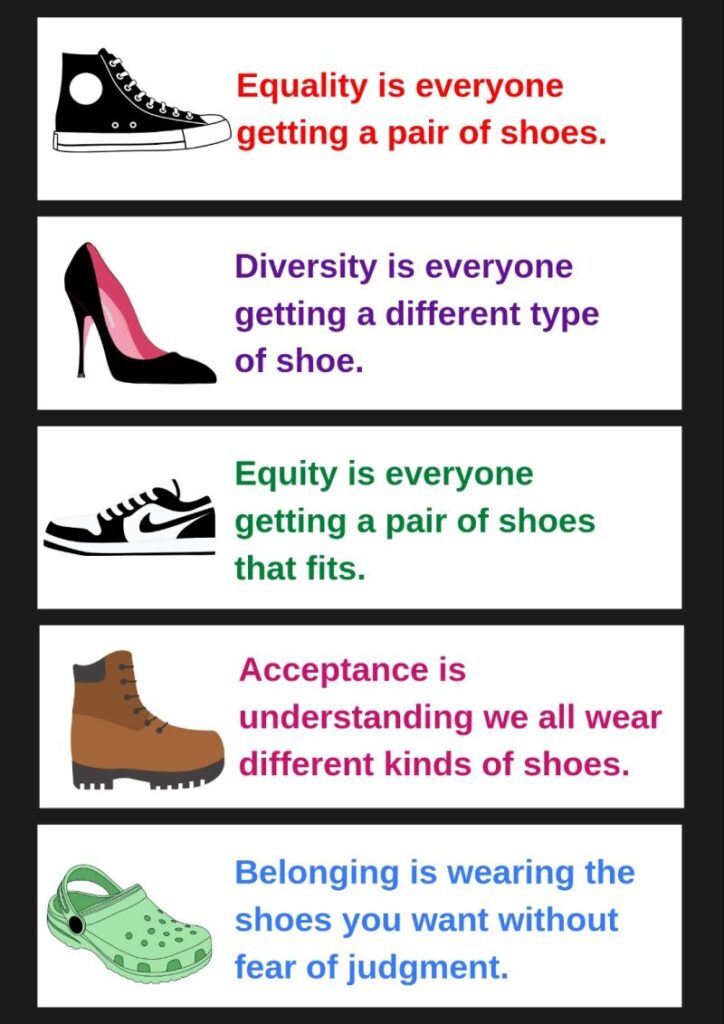
Students were also offered a chance to consider any hopes and fears about participating in the CEPNET project. This piece of work allowed the children to express ideas and get accustomed to letting their voice be heard.
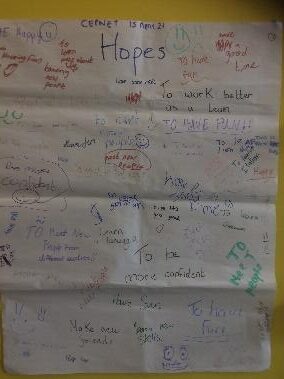
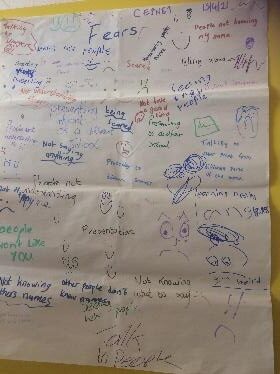
As well as these initial exercises to promote a safe and engaging space for the children as well as the tips for facilitation, the teachers and research teams worked together to produce a series of lesson plans and session agendas to support the roll out of Phase 1. The following lesson plans were used in the first four classes to help shape and inform the teacher and facilitator approach. Objectives are outlined as well as the methods to be used to deliver these Phase 1 sessions.
These were lesson plans used in one of our schools. A variation on these plans used in other schools can also be accessed if you are looking for other ideas. Have a look here for more facilitation notes.
Our teachers and facilitators also used sets of slides to guide their classroom activities. These slides acted as both an agenda and an opportunity for a planned recap at the start of the follow up session. As Phase 1 is typically organised over 4 consecutive sessions, these slides will be useful for you as you structure and scaffold your plans for your class. Each of these sessions typically lasted about 90 minutes. By the end of Session 4, the students were now moving on from the Discussion and Dialogue work and getting ready for their Project work.
The move into Phase 2 is typically associated with trying to better understand how research works, from defining the research question with the various groups to moving onto developing their own research plans and then carrying out the research.
These checklists proved very useful with our teachers in helping to get their students into the “thinking space” for doing research. First up, they had to think about how to get started on their research idea and then how to do an online search. It is important to continue the discussion from earlier about what constitutes reliable news sources and the notion of “fake news”. The students may be drawn to the most dramatic or over the top stories, emerging from a social media feed. Often the story has come from the school yard or an older sibling and has been exaggerated along the way. The students can be encouraged to examine the source and its validity. They can examine further sources for the same story to see if it checks out. Let them develop a list of reliable news sources as they continue this initial research work.
Getting Started with your Project
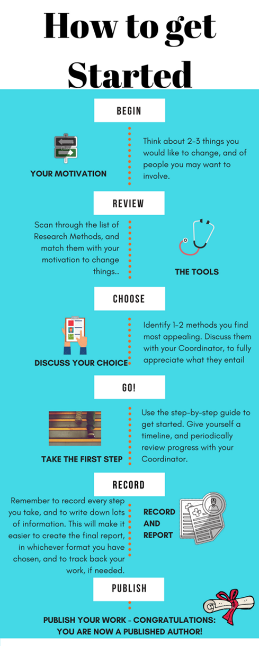
Thinking about Google
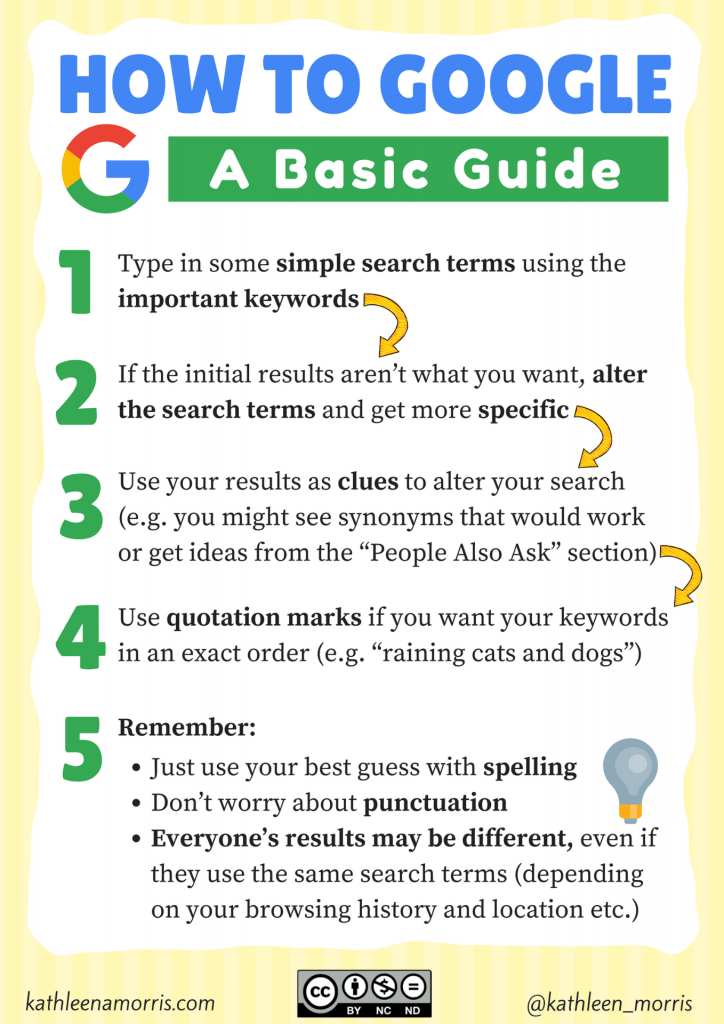
While this work is ongoing, it’s also never any harm to keep up to date with external resources on the SDGs just to keep informed. For instance, this resource offers a range of activities that can be used in classroom settings. Have a look and see if they can fit with your class. The sources used in such a document can also assist the students as they are working out their research question.
Phase 2 Supports
Phase 2 is primarily focused on carrying out research in the classroom. This section includes supports and resources as developed by teachers, researchers and facilitators, all based on their work in the classroom with over 400 children. Our teachers introduce the key issues linked to the research and project work.
There are some important tools that you can make use of in getting your students working in their groups and involved in their research.
As the students are now considering their “big interest” and trying to modify this into a specific research question, support can be provided to help them come up with clear questions, getting them to be as realistic as possible as they narrow down the focus. The sample lesson plans work through this phase, start with Session 5 as a useful guide.
The template for the CEPNET Research Process is a key resource at this point. This allows the groups to forward plan to the presentation stage and can be completed throughout the 4 weeks of the research phase. It also assists their thinking about selecting the type of artefact they will chose to reflect their findings and it helps them lead into Phase 3.
The following toolkit has been developed by research colleagues to look at a wide range of research methods and ideas. This can be distilled for your students into ideas of survey and interview techniques, deep dive research into topics, as well as preparing for action research.
As the students are working on their research work, it is useful to show them completed CEPNET projects from the website archive selection. There are a range of different projects on display here, as well as different types of artefacts, including videos, research reports, presentations and photos as well as music and song.
Phase 3 Supports
Having worked on their projects and developing a series of findings, to complete the CEPNET experience and approach, the students need to share their results. There are a myriad of ways that this can be done, from a presentation to the full school assembly, to a gathering of parents, to specific workshops with local NGOs or community organisations. All of these have been carried out during the project and the lessons and ideas are included here in this section.
Our teachers give you a summary here of the main issues, initially, an overview on why it is so important.
Next up, we have some other teachers explaining about the idea of the showcasing event.
As the students are working their way towards the end of their projects, they are trying to come up with the best way of presenting what they have discovered. They are trying to combine their creativity with practicality, they are also now possibly getting nervous about having to stand up in front of a large audience to explain their research findings. At this stage, it is a good idea to get them to review how previous groups of students managed this stage of the work.
In the archive of student projects, they can have a look at the selection of projects included there. They might want to have a look at different types of project presentations. The following project was interested in looking at Life on Land, specifically the fate of the white rhino.
These students looked at the sustainability of their football jerseys, adding a musical overlay to the presentation.
Another group decided to combine the creative urges of news presenters with the focus of their study on gender equality to set up a news interview.
As you will be planning your event with the support of your students, you will be considering a range of options linked to the audience (just school community or wider), venue (within the school or local facility such as library or community centre) and whether there will be refreshments. As you get closer to the showcase event, it is a good idea to get the students to prepare for their big day by doing the presentations with their class group and their peers. The more they can practice, the better for their confidence.
The following video shows one specific set of CEPNET presentations at the end of a research cycle. You can have a look at this to get some ideas.

